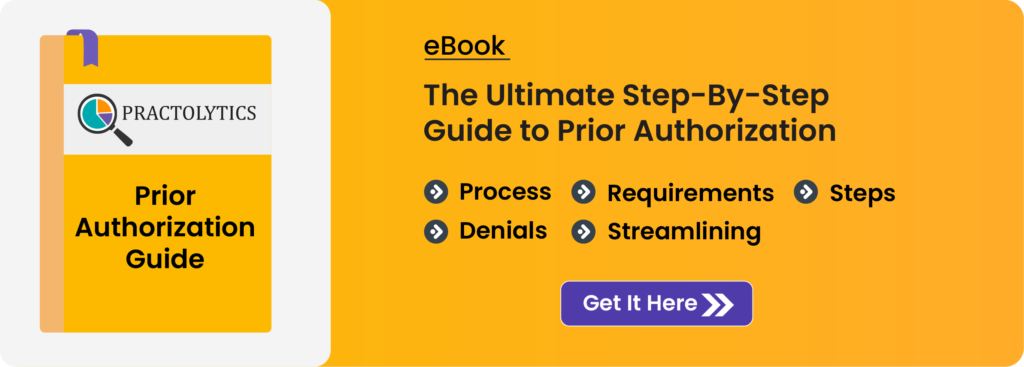Best Practices for Efficient Pre-Authorization Management
Pre-authorisation is often seen as necessary. It is frequently considered a necessary evil in the medical field. This can be a major bottleneck. It disrupts a healthcare organisation’s revenue cycle and delays patient care. Insurance companies’ prior approval requirements are unlikely to change soon. However, how providers handle this process can significantly impact their efficiency, stability, and patient satisfaction.
Healthcare companies can use strategic best practices to turn pre-authorisation from a confusing obstacle into a predictable, efficient component of their workflow rather than giving in to the administrative load. This blog explores best practices for efficient pre-authorization management.
Table of Contents
1. Proactive and Early Submission: The Golden Rule
Starting the pre-authorisation process as soon as feasible is the best practice that has the biggest impact. Delays and denials are inevitable when you wait until the last minute.
- When Scheduling/Pre-Registration: Right after a service is scheduled or when the patient is pre-registered is the ideal moment to begin the pre-authorisation process. This allows ample time to ascertain whether authorisation is necessary, gather the necessary documentation, and submit the request.
- Determine the Needs for Authorisation: Determine whether services need pre-authorisation before scheduling by putting in place reliable systems. This could involve employing specific pre-authorisation software or the features of your Practice Management (PM) or Electronic Health Record (EHR) system.
- Patient education: Inform patients in advance that the service they have scheduled requires pre-authorisation. Inform them of possible deadlines and the data that may be required from them. Open communication fosters a sense of security. Patients can better comprehend their illness as a result.
2. Comprehensive and Accurate Information Gathering:
Incomplete or inaccurate information is a leading cause of pre-authorization companies delays and denials. Ensuring all necessary data is collected accurately the first time is paramount.
- Demographic and Insurance Information: Verify patient demographics, insurance policy numbers, group numbers, and effective dates meticulously. Even a small typo can lead to significant delays.
- Clinical Documentation: Verify that any necessary clinical records attesting to medical necessity are easily accessible. Physician’s notes, ICD-10 diagnosis codes, CPT/HCPCS procedure codes, test findings, and any pertinent lab or imaging reports are all included in this. The likelihood of a speedy approval increases with the strength and clarity of the clinical justification.
- Requirements Specific to Payers: Pre-authorisation policies differ greatly between payers and even between plans within the same payer. Create an extensive, frequently updated database with payer-specific needs, such as necessary paperwork, fax, phone, and online portal submission methods, as well as certain clinical criteria and turnaround timeframes.
3. Dedicated and Trained Pre-Authorisation Teams:
Centralising pre-authorisation functions within a dedicated team can significantly improve efficiency and expertise.
- Specialised Roles: Assign employees to pre-authorisation as their main duty. This enables them to gain proficiency in payer-specific regulations, typical denial justifications, and successful communication techniques.
- Ongoing Training: Invest in your pre-authorisation team’s ongoing education. New medical codes, payer policy revisions, effective communication strategies, and handling challenging clinical situations should all be covered.
- Provide healthcare staff and billing departments with open lines of contact. Assure smooth communication between the pre-authorisation team, clinical staff, and billing departments. This guarantees readily available clinical data. Authorisation, if received, allows billing to begin.
4. Leverage Technology and Automation:
In the current healthcare context, manual pre-authorisation procedures are unsustainable, time-consuming, and prone to errors. The secret to efficiency and scalability is technology.
- Integrated EHR/PM Systems: Utilise the capabilities of your EHR and PM systems for pre-authorisation management. Many systems offer features to flag services, track authorisation status, and generate reports.
- Automated Eligibility & Benefits Verification: Before even starting pre-authorisation, confirm patient eligibility and benefits in real-time. Automated solutions can instantly verify active coverage, deductibles, copayments, and most importantly, whether pre-authorisation is required for a specific service.
- Specialised Pre-Authorisation Software/Platforms: Invest in dedicated pre-authorisation management software. These platforms often offer:
- Automated Submission: Electronic submission of requests to various payers.
- Status Tracking: Real-time tracking of authorisation status, reducing manual follow-up.
- Rule Engines: Built-in payer-specific rules and clinical criteria to guide staff.
- Reporting & Analytics: Insights into denial rates, turnaround times, and staff productivity to identify bottlenecks.
- Payer Portal Integration: Smooth access to several payer portals for effective data sharing.
- Robotic Process Automation (RPA): RPA can revolutionise excessively repetitive jobs, such as data entry into payer interfaces or basic status checks, freeing up human staff to tackle more difficult problems.
5. Proactive Follow-Up and Escalation
Requesting something is only the first step. Avoiding delays and promptly addressing issues requires regular follow-up.
- Timely Follow-Up: Establish a detailed schedule for answering submitted requests. Don’t wait for the payer’s stated turnaround time to expire. Proactive follow-up can often expedite the process.
- Documentation of Every Interaction: Meticulously document every interaction with the payer – date, time, representative’s name, reference numbers, and details of the conversation. This documentation is invaluable for appeals or when escalating an issue.
- Escalation Protocol: Develop a clear escalation protocol for stalled or denied authorisations. Both external escalation to higher levels within the payer organisation and internal escalation points (such as the manager or team lead) should be included.
- Peer-to-Peer Reviews: Recognise how to start P2P reviews if an authorisation request is turned down. This enables a payer’s medical reviewer to speak with the treating physician directly about the medical need.
6. Denial Management and Appeals Process:
Even with the best practices, denials will occur. Having a robust denial management and appeals process is essential.
- Root Cause Analysis: For every denial, conduct a thorough root cause analysis. Was it due to missing information, a coding error, lack of medical necessity documentation, or a payer policy change? Understanding the root cause helps prevent future denials.
- Timely Appeals: Adhere strictly to payer appeal timelines. The chance to receive payment may be lost if a deadline is missed.
- Strong Appeal Letters: Write thorough appeal letters that include a clear explanation of the medical necessity, cite pertinent clinical recommendations, and provide strong evidence to counter the payer’s refusal reason.
- Use appeals to track your success rates. Identify trends and areas where your initial filing process or appeal approach should be improved.
7. Continuous Monitoring and Improvement:
Pre-authorisation management is a continuous process. It requires constant assessment and modification.
- Key Performance Indicators (KPIs): Track KPIs such as:
Average pre-authorisation turnaround time
Pre-authorisation denial rate
First-pass approval rate
Percentage of pre-authorisations submitted electronically
Staff productivity per authorisation - Finding bottlenecks, non-compliance, and potential for efficiency improvements requires regular audits. The primary emphasis of these audits should be on your pre-authorisation procedure.
- Feedback loops are essential for identifying problems. They are also essential for resolving problems. Find out what the billing, front desk, and clinical staff think about the changes. Get their feedback on the changes.
- Stay informed about payer policies. Rules and regulations about payers are subject to regular modifications. Participate in workshops and subscribe to payer mailings. Check provider portals for updates on a regular basis.
Conclusion:
Effective pre-authorisation management protects patient access to care. It also ensures financial stability for your company. Healthcare providers can reduce the administrative burden of pre-authorisation. They may accomplish this by being proactive, investing in the appropriate technology, and enabling dedicated teams. This facilitates timely access to essential medical services, improving patient care and satisfaction. A healthier revenue cycle management and fewer claim denials follow from this. It’s challenging to make the pre-authorisation process more effective. But the rewards to your business and patients are worth the effort.
This blog provides a thorough how-to for turning pre-authorisation from a cumbersome obstacle into an efficient procedure. The essay, which is intended for healthcare professionals, describes tried-and-true methods to increase productivity and cut down on delays, including early submission, precise data collecting, specialised authorisation teams, and technological integration. It emphasises the advantages of constant performance monitoring, strong denial management, proactive follow-ups, and automation. Providers can enhance patient care timeliness, reduce administrative hassles, and stabilise revenue cycles by using these best practices. This guide enables healthcare companies to take charge of pre-authorisation and make it a predictable and controllable aspect of their operations by emphasising real-world implementation and quantifiable progress.
Read More – Prior Authorization for MRI
Talk to Medical Billing Expert Today — Get a Free Demo Now!






